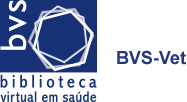Potential for biocontrol of melanized fungi by actinobacteria isolated from intertidal region of Ilha Do Mel, Paraná, Brazil
Dalitz, Camila de AraújoPorsani, Mariana VieiraFigel, Izabel CristinaPimentel, Ida C.Dalzoto, Patrícia R.
Abstract Actinobacteria occur in many environments and have the capacity to produce secondary metabolites with antibiotic potential. Identification and taxonomy of actinobacteria that produce antimicrobial substances is essential for the screening of new compounds, and sequencing of the 16S region of ribosomal DNA (rDNA), which is conserved and present in all bacteria, is an important method of identification. Melanized fungi are free-living organisms, which can also be pathogens of clinical importance. This work aimed to evaluate growth inhibition of melanized fungi by actinobacteria and to identify the latter to the species level. In this study, antimicrobial activity of 13 actinobacterial isolates from the genus Streptomyces was evaluated against seven melanized fungi of the genera Exophiala, Cladosporium, and Rhinocladiella. In all tests, all actinobacterial isolates showed inhibitory activity against all isolates of melanized fungi, and only one actinobacterial isolate had less efficient inhibitory activity. The 16S rDNA region of five previously unidentified actinobacterial isolates from Ilha do Mel, Paraná, Brazil, was sequenced; four of the isolates were identified as Streptomyces globisporus subsp. globisporus, and one isolate was identified as Streptomyces aureus. This work highlights the potential of actinobacteria with antifungal activity and their role in the pursuit of novel antimicrobial substances.
Texto completo